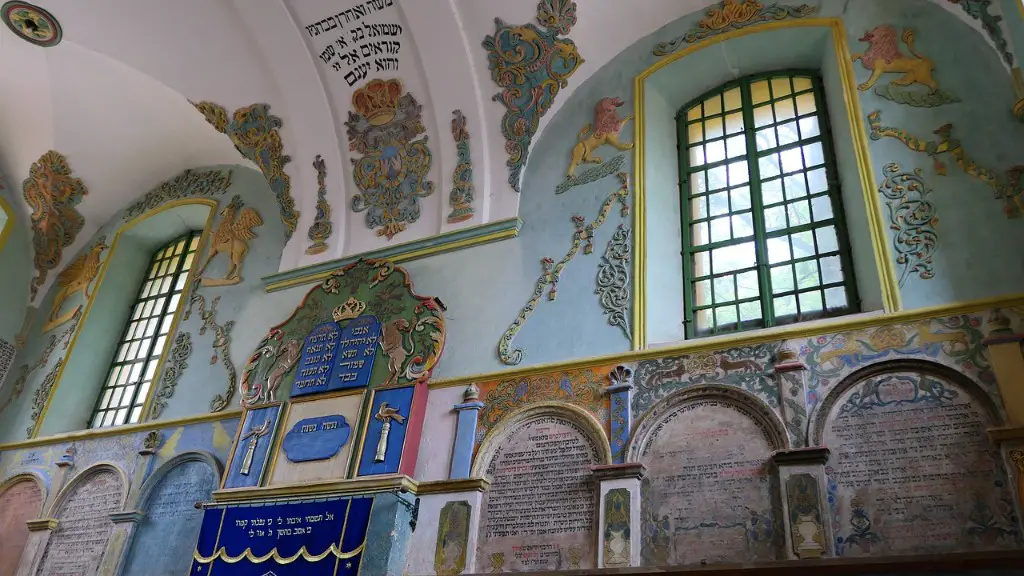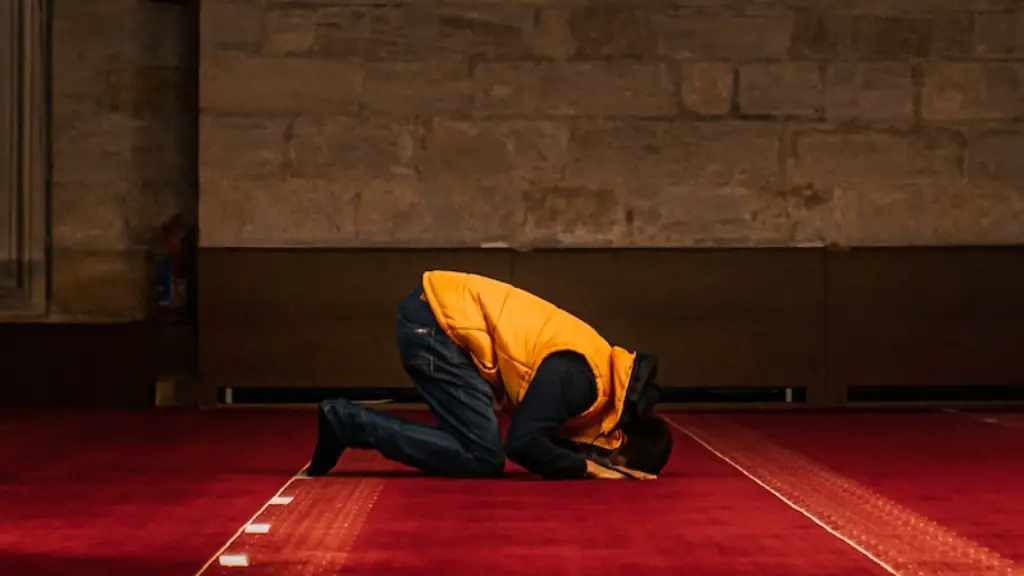Historical and Religious Significance
Temple Mount is a significant religious site for three world religions: Judaism, Christianity, and Islam. It has been a spot of great spiritual importance to all three since ancient times. For Jews, the site is the most renowned in the world, the best-known symbol of the connection between God and humanity. It is the site of two biblical Jewish temples, the First and Second Temple, which stood on the Temple Mount, the holiest place in Judaism. In ancient times, the site was renowned for its importance and beauty, and was a pilgrimage site for millions of Jewish worshippers for centuries.
Judaism considers Temple Mount as the holiest place and Jews are forbidden from entering in order to abide by traditional laws and respect the holiness of the site. Its significance in Judaism cannot be underestimated; it is believed to be the source of the original divine inspiration and the origin of the world. According to the Talmud, it is the exact place that the first Jewish Temple, the Beit Hamikdash (Holy House), stood, taking in the significance of being the ancient center of Jewish life. In Jewish literature, it is commonly referred to as “Har Hazeitim”, the Mountain of the Temple, and is the place Jews pray in all directions to during the thrice-daily Morning, Afternoon and Evening prayers.
Political Significance
The Temple Mount is one of the most politically contentious places in the world, and has been at the center of the Israeli-Palestinian conflict for years. It is considered by both sides to be a holy site and an important center for their respective heritages. Jewish nationalists view it as its ancient Temple, the Third Temple, and strive for control of the area and the Temple Mount compound in order to rebuild the structure. Palestinians and their supporters, on the other hand, view the area as the third-holiest site in Islam, the site of the Mosque of Al-Aqsa and the Dome of the Rock and an integral part of their own heritage. Therefore, both sides protest and fight to gain control of the area.
The Israeli-Palestinian conflict has been a long-standing source of tension and violence in the Middle East and the Temple Mount is a major source of contention between the two sides. Many attempts have been made to resolve the conflict, but they have all failed due to the various interests of the different sides. Regardless of the failure of these attempts, it is still an area of great religious, political and cultural significance to both sides and will continue to be an issue that requires balancing between the two sides.
Temple Mount Site Preservation
In order to protect the site for future generations, both Jewish and Islamic institutions are dedicated to preserving the sacred site. According to Jewish historian Professor Ben-David, the Temple Mount Preservation Society has implemented several important changes in recent years. For example, the Society has built a pavilion for the Shechina (the Divine Presence), the Sephirah Gate for prayers, the largest synagogue ever built on the Temple Mount and the Kabbalah Monument.
The Society also works to enhance the site’s physical beauty by restoring, preserving and enhancing the existing artifacts, such as the historical walls and streets, and building new ones as needed. In 2017 they launched a project to beautify the outdoor spaces, build new facilities and walkways, and set up permanent archaeological supervision. In addition to the physical renovations, the Society also works to provide educational and spiritual experiences to enhance the visitor’s experience and add to the spiritual character of the site.
Cultural Impact
The Temple Mount has endured throughout the centuries and its influence is felt in many forms. Jews, Christians and Muslims all visit the site to pray and to show their faith. The significance of the site and the importance it holds for each of these religions is undeniable and it is a unique and symbolic place for them to gather. Despite the current conflict in the Middle East, the site is still a source of hope, and its importance stands as a reminder that all can rely on faith in order to bring peace.
The site is also a popular tourist destination and its significance to the three world religions makes it an attractive spot for people from around the world. The relation of the current Jewish nation to the site is also important for the Jewish people; it gives them a connection to their ancestors and to the history of Judaism.
Controversy
Despite the site’s significance being shared by the three Abrahamic faiths, the area continues to be a source of controversy and tension. The conflict between Israel and Palestine has been a significant source of tension surrounding the site and there have been many protests and demonstrations. Jews are barred from praying or displaying their religious symbols while on the Temple Mount and cases of violence have been reported.
In addition to the political tensions, the site is also a source of religious debate between the faiths. Jewish and Islamic scholars continue to debate the nature of the Temples, the intended purpose of the two Temples, and the location of the Temple Mount in relation to the city. Muslims believe that the site has always been part of their holy space and as such, should not be used as part of any efforts to rebuild the Temple. Jews, on the other hand, view the site as the most important site in Judaism and see the rebuilding of the Temples as significant to their faith.
Conclusion of Occupation
The Israeli-Palestinian conflict has been ongoing for many years and the Temple Mount is at the center of the issue. Israel’s control over the area has been a source of tension for both sides, and the conflict continues to be a source of division on a global scale. While the site is “officially” shared between Jews and Muslims, it is still the subject of much debate and controversy. Despite the tensions, both sides continue to make efforts to ensure the preservation of the site and its shared religious significance.
Effect on Judaism
The Temple Mount has been a source of intense religious, political and cultural importance for Jews for centuries. In addition to its spiritual significance to Jews, it has also been the source of ongoing conflict and protest between Jews and Palestinians. Historically, the Temple Mount has served as a place of prayer, worship and pilgrimage for Jews, and a symbol of national identity. For Jews, it is a source of unity and hope, and a reminder of the power that faith and tradition can have in the face of adversity.
As such, the Temple Mount is a place where Jews can go to connect with their ancient history, to pray, and to remember who they are and what they stand for. It is a reminder of the power of faith, of the enduring strength of tradition, and of the importance of striving for a peaceful resolution to the ongoing conflict in the Middle East.
Modern Pilgrimage
In modern times, Jewish pilgrims continue to flock to the Temple Mount, despite the political tensions. The site remains an important symbol of faith and identity to many Jews. Some travel great distances to visit the site as a form of pilgrimage, to show their faith and to connect with the site’s application it holds for their religion. As such, the Temple Mount remains an important destination for Jews from all over the world.
Modern Re-Building Plans
Since the re-establishment of the State of Israel in 1948, there has been discussion of re-building the Temple Mount in Jerusalem. The plan, however, has divided the Jewish community. Some believe that it would be a sign of Jewish sovereignty, while others believe that it should not be done because of religious law and the sentimentality associated with the site. There have been several efforts to implement a plan, but all have been unsuccessful due to the political tensions and controversies surrounding the site.
Religious Impact
The Temple Mount is certainly an important source of religious significance and meaning for Jews, Christians, and Muslims. As one of the most important places in the world to all three faiths, it serves as a reminder of the strength of religious faith in the face of adversity. As a symbol of Jewish, Christian and Muslim faith and identity, the site should be respected and valued for its significance.
It is a place of great power and emotional impact for all three faiths, and should serve as a reminder of how different religions can come together in peace and unity. The Temple Mount is a reminder of the power of prayer and faith, and of the enduring strength of tradition. It is a reminder of the importance of working together to live in peace and harmony.

